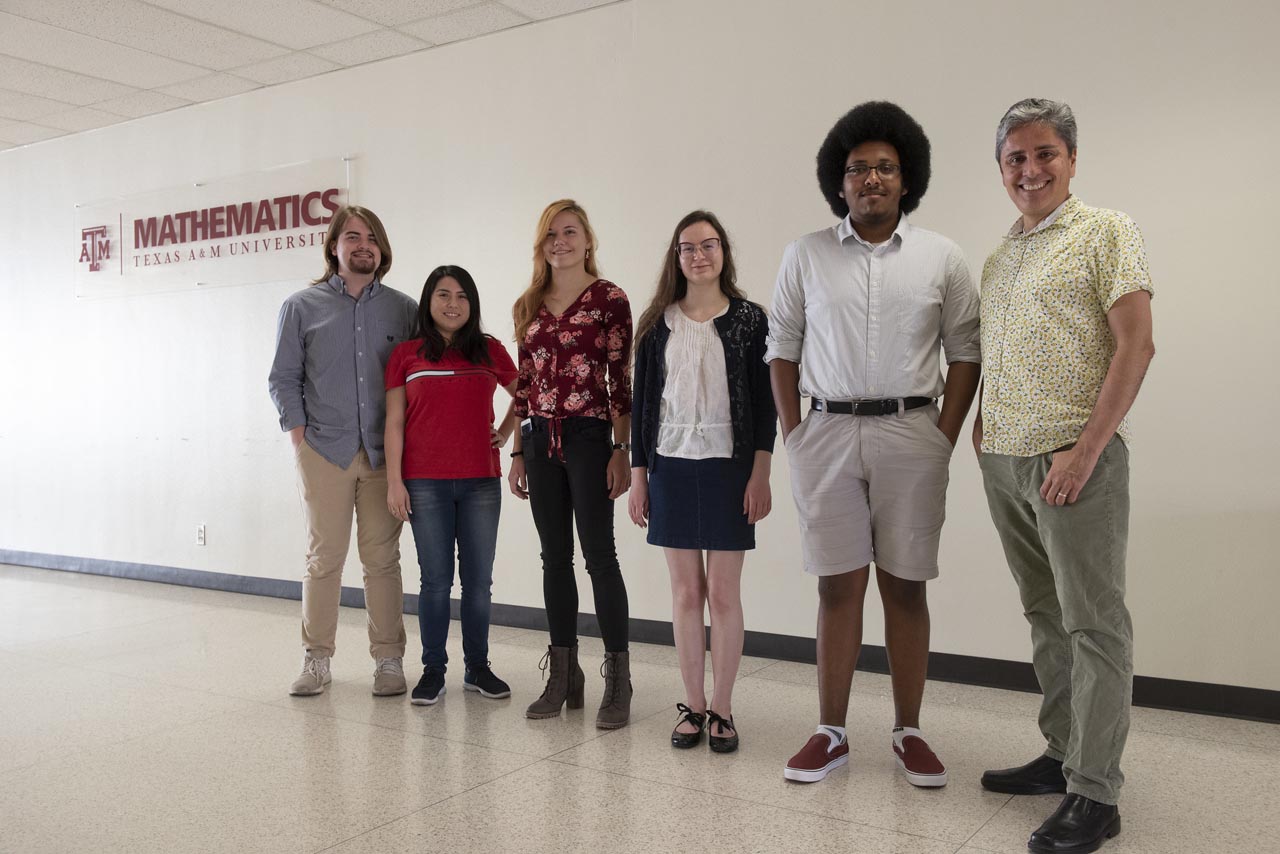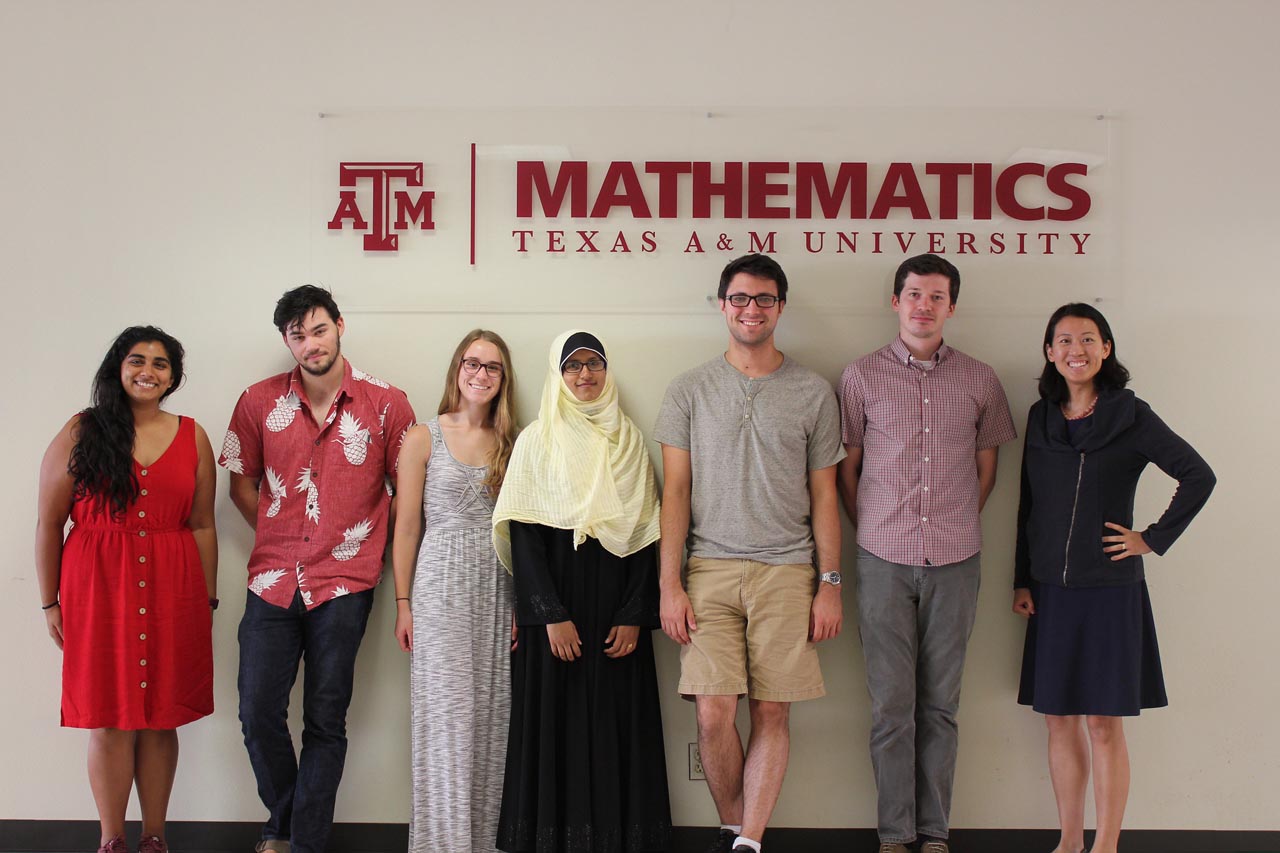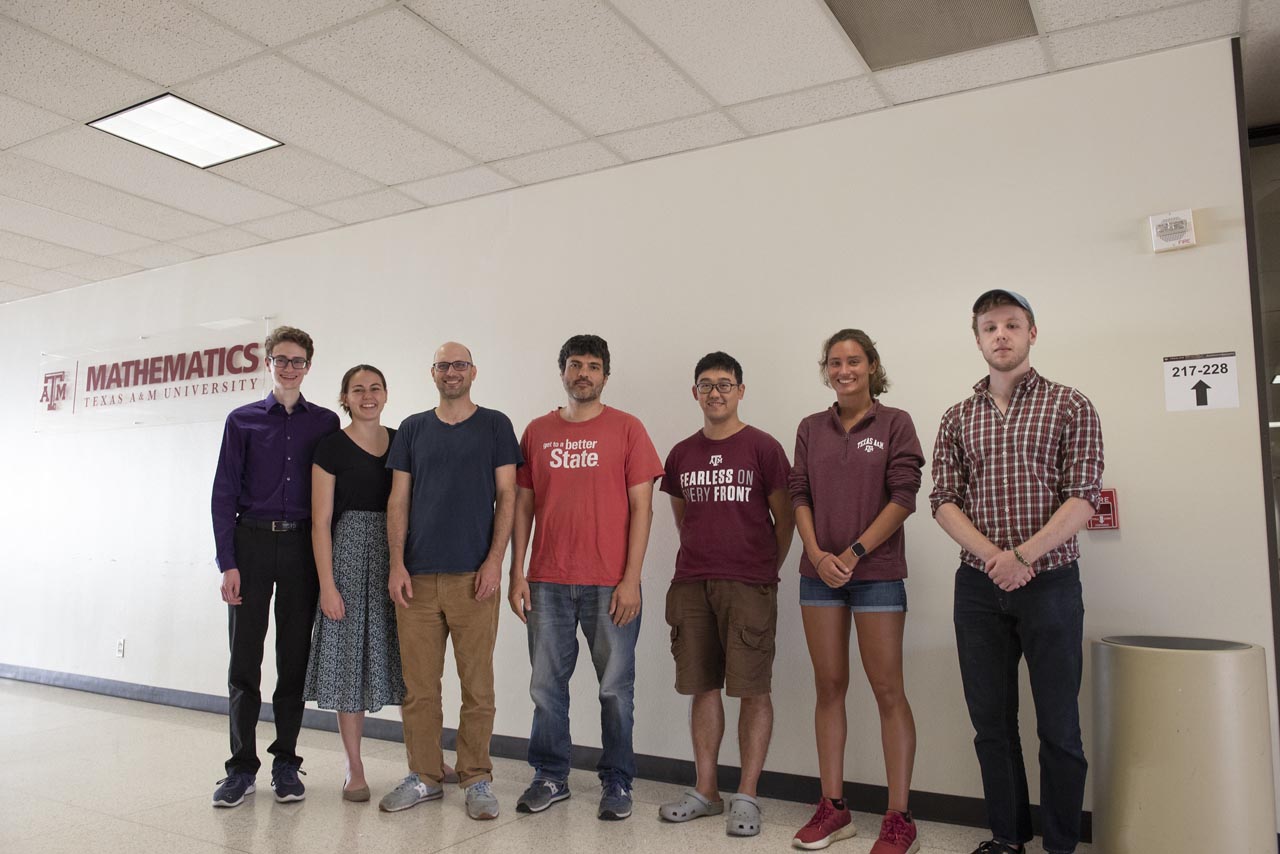REU Mini-Conference, July 22-23, 2019
Schedule and Abstracts
Participants, Presentations, and Reports
- Algorithmic Algebraic Geometry Mentors: Prof. J. Maurice Rojas; Joann Coronado
- Lauren Gernes (Lewis University): Probability of Easily Approximating the Positive Real Roots of Trinomials (Part 1), slides, report (joint with Laurel Newman)
- Laurel Newman (Harvey Mudd College): Probability of Easily Approximating the Positive Real Roots of Trinomials (Part 2), slides
- Tyler Feemster (Princeton University): On the Existence and Number of Roots of Polynomials over Prime Fields, slides
- Caleb Robelle (University of Maryland, Baltimore County): Counting Points on Arbitrary Curves Over Prime Power Rings, slides, report
- Algebraic Methods in Mathematical Biology Mentors: Prof. Anne Shiu; Nida Obatake and Thomas Yahl
- Seth Gerberding (University of South Dakota): Preserving Identifiability: Removing Leaks, Moving Outputs, and a New Model, slides, report
- Brianna Gambacini (University of Connecticut): Neural codes (Part 1), slides, report (joint with Sam Macdonald)
- Sam Macdonald (Willamette University): Neural codes (Part 2), slides, report (joint with Brianna Gambacini)
- Dilruba Sofia (University of Massachusetts, Dartmouth): An Efficient Way of Understanding the Maximum Number of Steady States of Chemical Reaction Networks, slides, report
- Number Theory Mentors: Prof. Matt Young and Prof. Riad Masri; Wei-Lun Tsai
- Stephanie Gaston (CSU Dominguez Hills): An average of generalized Dedekind sums (Part 1), slides, report (joint with Travis Dillon)
- Travis Dillon (Lawrence University): An average of generalized Dedekind sums (Part 2), slides, report (joint with Stephanie Gaston)
- Asimina Hamakiotes (Macaulay Honors at Baruch College): Asymptotic Distribution of the Partition Crank (Part 1), slides, report (joint with Aaron Kriegman)
- Aaron Kriegman (Haverford College): Asymptotic Distribution of the Partition Crank (Part 2), slides
Algorithmic Algebraic Geometry
Algebraic Methods in Mathematical Biology
Number Theory
